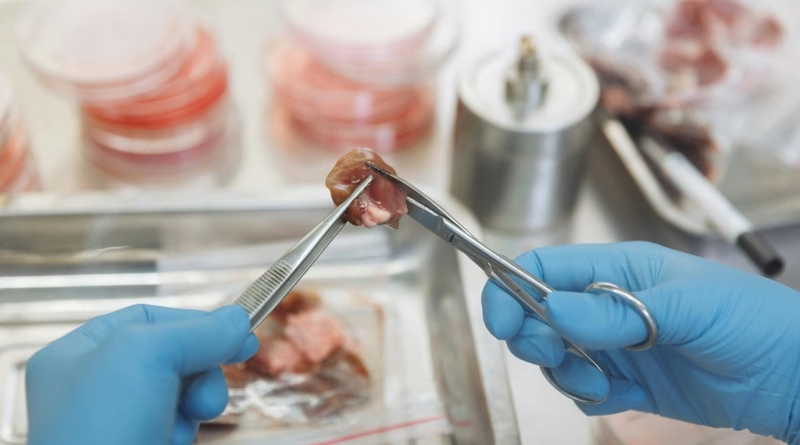Can Lab-Grown Meat Go Mainstream in 2025?
Ten years ago, lab-grown meat sounded like science fiction. Today, it’s served in select restaurants in the U.S., Singapore, and Israel—grown from real animal cells, without the slaughter.
But as we hit mid-2025, a big question remains: Can cultivated meat break out of the niche and go truly mainstream?
Let’s break down the state of lab-grown meat today—what’s working, what’s missing, and whether this food-tech revolution can land in your grocery cart anytime soon.
✅ What’s Already Happening in 2025
🍽️ 1. Regulatory Approval Is Spreading
- Singapore was the first to approve cultivated chicken in 2020.
- In 2023, the US FDA and USDA approved the sale of lab-grown chicken from companies like GOOD Meat and UPSIDE Foods.
- In 2025, approvals are expanding in Israel, the Netherlands, and some EU pilot markets.
Why It Matters:
This opens the door to more suppliers, more products, and eventual price drops.
🧫 2. The Science Works—At Small Scale
Lab-grown meat is made by cultivating animal cells in bioreactors with the help of growth media, creating muscle and fat tissues that mimic real meat.
Companies can now produce:
- Chicken breast and nuggets
- Ground beef and pork
- Fish fillets (like tuna and salmon)
In blind taste tests, most people can’t tell the difference.
🌍 3. Environmental and Ethical Benefits Are Clear
Cultivated meat can:
- Cut land use by over 90%
- Reduce methane emissions (no cows = no burps)
- Avoid antibiotics, hormones, and animal suffering
- Eliminate slaughter and mass farming infrastructure
As climate pressure builds, consumers are more open than ever to non-traditional proteins—especially Gen Z and millennials.
❌ What’s Holding It Back in 2025
💰 1. It’s Still Expensive
A cultivated chicken nugget in a restaurant can cost 5–10x more than conventional meat.
- The growth medium (a nutrient-rich solution) remains costly.
- Scaling up bioreactor facilities is capital-intensive and slow.
Until production costs drop significantly, lab-grown meat will remain a luxury protein—not a weeknight dinner staple.
🧱 2. Infrastructure Is Missing
Mass adoption needs:
- Cold-chain logistics
- Dedicated bioreactor farms
- Consumer-ready packaging and labeling standards
- Supply chains for sustainable growth media
In 2025, most companies are still in pilot production, serving high-end restaurants or limited tasting events.
🍔 3. Public Perception Is Mixed
While early adopters are curious, broader consumer surveys show:
- Confusion about what “lab-grown” means
- Concerns over safety, “unnaturalness”, or corporate control of food
- Preference for plant-based meat, which is already widely available
Education and transparent marketing are crucial to gaining public trust.
🔬 The Tech Improving Things
| Innovation | What It Solves |
|---|---|
| FBS-free growth media | Cuts cost and avoids animal use |
| Scaffold tech | Mimics real meat texture (e.g. muscle fibers) |
| AI-optimized bioreactors | Boosts yield, reduces contamination |
| Recyclable bioplastics | For sustainable packaging |
In 2025, tech companies are focusing on automation + AI to improve consistency, safety, and speed of production.
🧭 What Needs to Happen for Mainstream Adoption?
- Cost parity with premium meats by 2027
- Regulatory streamlining across major markets (US, EU, India, China)
- Retail trials in grocery chains and meal kits
- Consumer outreach—especially around safety and sustainability
- Flavor diversification—beyond chicken nuggets
🧠 Final Thought: Still Sizzling, Not Yet Served
In 2025, lab-grown meat is real, regulated, and ready to eat—but not quite ready for the average dinner table.
It’s still a luxury tech product. But as production scales and consumer attitudes shift, it could transform how we think about meat—turning slaughter-free protein from a novelty into the norm.
The real question isn’t if lab-grown meat will go mainstream.
It’s how soon you’ll find it in your lunchbox.




